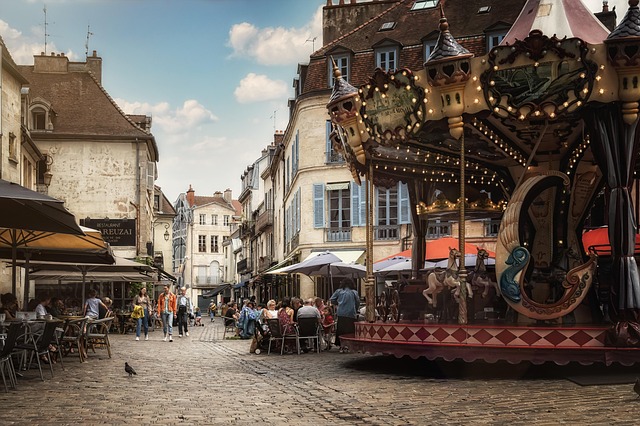The evolution of urban environments in the 21st century is increasingly governed by a dual imperative: to reduce ecological impact while enhancing human experience. At the heart of this transformation lies the concept of the Pedestrian‑friendly public space—a spatial configuration that prioritizes people walking, cycling, and gathering over vehicle traffic. Such spaces are not merely aesthetic additions; they are strategic tools for achieving carbon neutrality, fostering social cohesion, and creating resilient cities that can thrive in a warming world.
Why Pedestrian‑friendly Public Space Matters for Sustainable Development
When a city is designed to accommodate pedestrians first, several benefits align with the goals of sustainable development. These benefits include:
- Reduction of greenhouse gas emissions by curbing car usage.
- Lower air and noise pollution, leading to better public health outcomes.
- Encouragement of active lifestyles, contributing to lower obesity rates.
- Creation of social hubs that strengthen community ties.
- Increased property values and economic activity through higher foot traffic.
The Core Design Principles
Effective pedestrian spaces rely on a set of interlocking design principles that can be applied across urban scales:
- Connectivity: Seamless links between residential zones, commercial districts, and green corridors encourage walking.
- Safety: Adequate lighting, clear sightlines, and traffic calming measures reduce accidents.
- Comfort: Shade, seating, and climate-responsive materials create inviting microclimates.
- Accessibility: Inclusive designs accommodate all ages and abilities.
- Multifunctionality: Spaces that can host markets, performances, or informal gatherings adapt to community needs.
Integrating Green Technologies
Modern pedestrian zones can be enriched with green technologies that further amplify their sustainability credentials. Some of the most impactful innovations include:
- Permeable paving that allows stormwater to infiltrate, reducing runoff and recharging local aquifers.
- Solar‑powered lighting which provides energy‑efficient illumination while lowering utility costs.
- Vertical gardens and bioswales that absorb CO₂, filter pollutants, and provide visual green cover.
- Smart sensor networks that monitor pedestrian flow, air quality, and energy use to inform real‑time management.
- Hybrid bus and tram stops integrated into pedestrian hubs, promoting multimodal transport.
Assessing the Ecological Footprint
One of the key metrics for a city’s sustainability is its ecological footprint, a measure of the biologically productive land and water area required to support its consumption and waste. Pedestrian‑friendly public spaces influence this footprint in several ways:
“Reducing vehicle miles traveled (VMT) directly lowers the land area needed for road infrastructure and parking, thereby shrinking the urban ecological footprint.” – Urban Planning Review, 2023
When pedestrian zones replace or reduce the need for extensive roadway networks, cities can reclaim land for parks, community gardens, or even wildlife corridors. This land reclamation not only decreases the ecological footprint but also creates new habitats for urban biodiversity.
Carbon Neutral Implications
Carbon neutrality is a target that many municipalities are setting for the next few decades. Pedestrian‑friendly public spaces contribute to this goal through:
- Direct emission reductions by encouraging active transport modes.
- Lower indirect emissions via reduced energy consumption for heating, cooling, and lighting when compared to vehicular corridors.
- Opportunity for carbon sequestration through urban trees, green roofs, and soil restoration projects integrated into the spaces.
- Enhanced energy efficiency through building designs that prioritize daylight and natural ventilation.
Case Study: A City That Walked to Net Zero
Consider the example of a mid‑size city that embarked on a comprehensive pedestrianisation plan five years ago. The city’s strategy involved:
- Closing a 12‑kilometer stretch of main street to private vehicles during peak hours.
- Installing a network of solar streetlights and permeable pavements.
- Creating a series of pocket parks connected by shaded pedestrian walkways.
- Deploying a real‑time monitoring app that shared live data on air quality and pedestrian counts.
Results, measured six years into the program, include a 35% drop in city‑wide CO₂ emissions, a 28% increase in walking distances per resident, and a noticeable uptick in local retail sales due to increased foot traffic. The ecological footprint of the city shrank by 12% as land previously used for roads and parking was converted to green spaces.
Challenges and Mitigation Strategies
Despite the clear advantages, transforming urban areas into Pedestrian‑friendly public spaces is not without obstacles. Some of the most common challenges and ways to address them are:
- Economic resistance: Businesses may fear reduced vehicle access. Mitigation involves demonstrating increased foot traffic and offering incentives for street‑level retail.
- Infrastructure costs: Installing green technologies can be expensive. Public‑private partnerships and phased implementation can spread costs over time.
- Maintenance: Green features require regular upkeep. Integrating low‑maintenance native plants and community stewardship programs helps sustain them.
- Political inertia: Urban planning decisions often involve multiple stakeholders. Transparent public consultation and evidence‑based forecasting can build consensus.
Future Directions: Smart, Sustainable, and Inclusive
The next wave of Pedestrian‑friendly public space design will likely weave together several emerging trends:
- Advanced data analytics to fine‑tune foot traffic flow and resource allocation.
- Integration of augmented reality overlays that provide historical, cultural, or environmental information as people walk.
- Adaptive infrastructure that can shift between active and passive modes depending on weather or seasonal use.
- Enhanced focus on equity, ensuring that underserved neighborhoods receive high‑quality pedestrian spaces as part of broader resilience strategies.
By anticipating these developments, cities can position themselves as leaders in carbon‑neutral urbanism while simultaneously enriching the everyday lives of their residents.
Conclusion: Pedestrian‑friendly Public Space as a Catalyst for Carbon Neutral Cities
Pedestrian‑friendly public space is more than a design preference; it is a strategic lever that mobilises cities toward sustainability, health, and equity. By replacing vehicle‑centric infrastructure with thoughtfully engineered, green‑rich pedestrian corridors, urban planners can cut emissions, lower ecological footprints, and stimulate vibrant community life. The convergence of design principles, green technologies, and policy frameworks offers a robust pathway for municipalities worldwide to achieve the ambitious target of carbon neutrality. As the evidence mounts, the next step for every city is to translate vision into practice, walking together toward a future where streets are safe, welcoming, and alive for all.




